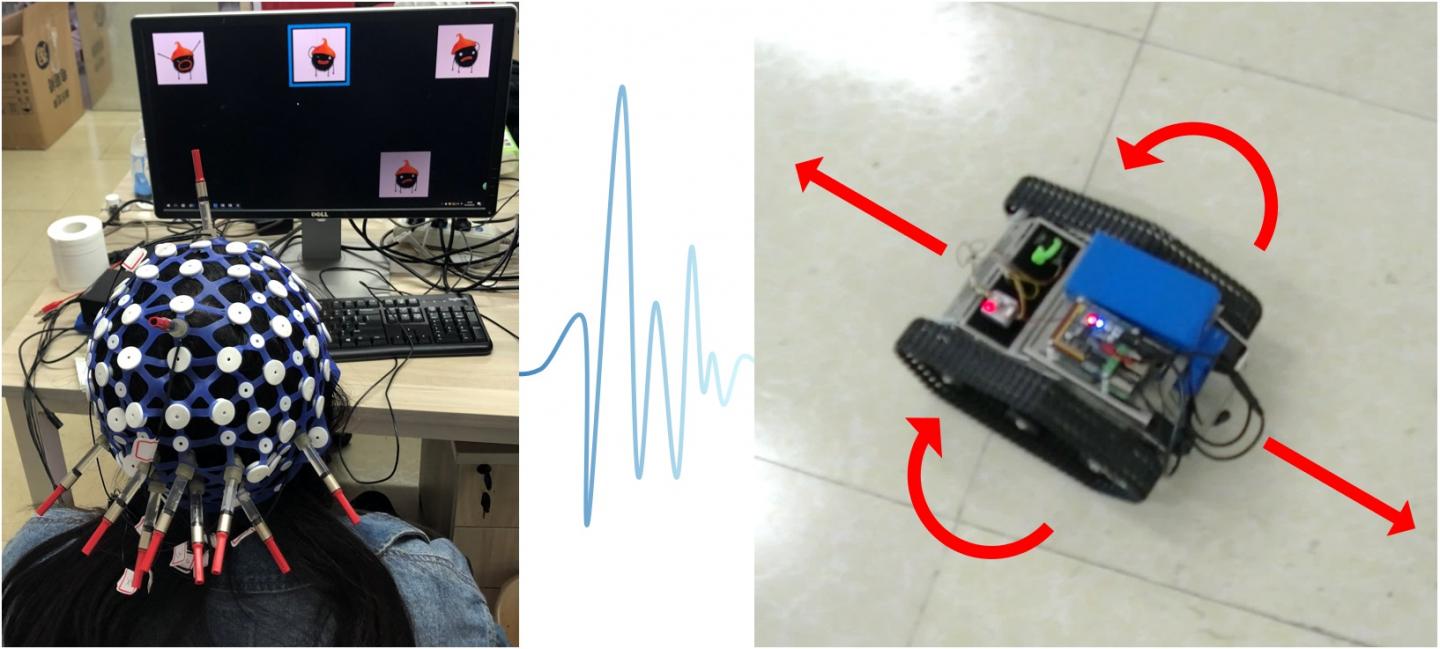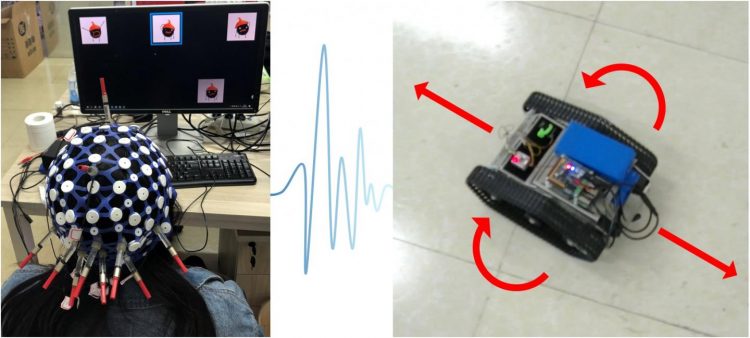
Credit: Adapted from Nano Letters 2019, DOI: 10.1021/acs.nanolett.9b02019
It sounds like science fiction: controlling electronic devices with brain waves. But researchers have developed a new type of electroencephalogram (EEG) electrode that can do just that, without the sticky gel required for conventional electrodes. Even better, the devices work through a full head of hair. The researchers report the flexible electrodes, which could someday be used in brain-computer interfaces to drive cars or move artificial limbs, in the ACS journal Nano Letters.
Often used to diagnose seizure disorders and other neurological conditions, EEGs are machines that track and record brain wave patterns. To conduct an EEG, technicians typically use a very sticky gel to attach electrodes to different regions of the patient’s scalp. However, this gel is difficult to wash out of hair and sometimes irritates the skin. In addition, hair interferes with the electrical signals. Ming Lei, Bo Hong, Hui Wu and colleagues wanted to develop an EEG electrode that is flexible, robust and gel-free. Such an electrode could help patients, but also might allow people to someday control devices with their brains.
To make the electrodes, the researchers placed silver nanowires in a commercially available melamine sponge. The electrodes cost only about 12 cents each to make and could be mass-produced. The team assembled 10 electrodes into a flexible silicon cap and measured their performance when worn by people with shaved or hairy heads. On hairless skin, the new electrodes recorded brain waves as well as conventional ones. What’s more, the flexibility of the electrodes allowed them to perform similarly on hairy and hairless skin, unlike the conventional devices. A volunteer wearing the cap could control a toy car with her mind, making it go forward, backward, left or right. The electrodes are mechanically stable through different cycles and movements and are also resistant to heat and sweat, the researchers say.
###
The authors acknowledge funding from the National Natural Science Foundation of China, the National Basic Research Program of China and the State Key Laboratory of Information Photonics and Optical Communications.
The American Chemical Society, the world’s largest scientific society, is a not-for-profit organization chartered by the U.S. Congress. ACS is a global leader in providing access to chemistry-related information and research through its multiple databases, peer-reviewed journals and scientific conferences. ACS does not conduct research, but publishes and publicizes peer-reviewed scientific studies. Its main offices are in Washington, D.C., and Columbus, Ohio.
To automatically receive news releases from the American Chemical Society, contact [email protected].
Follow us on Twitter | Facebook
Media Contact
Katie Cottingham
[email protected]
Related Journal Article
http://dx.





